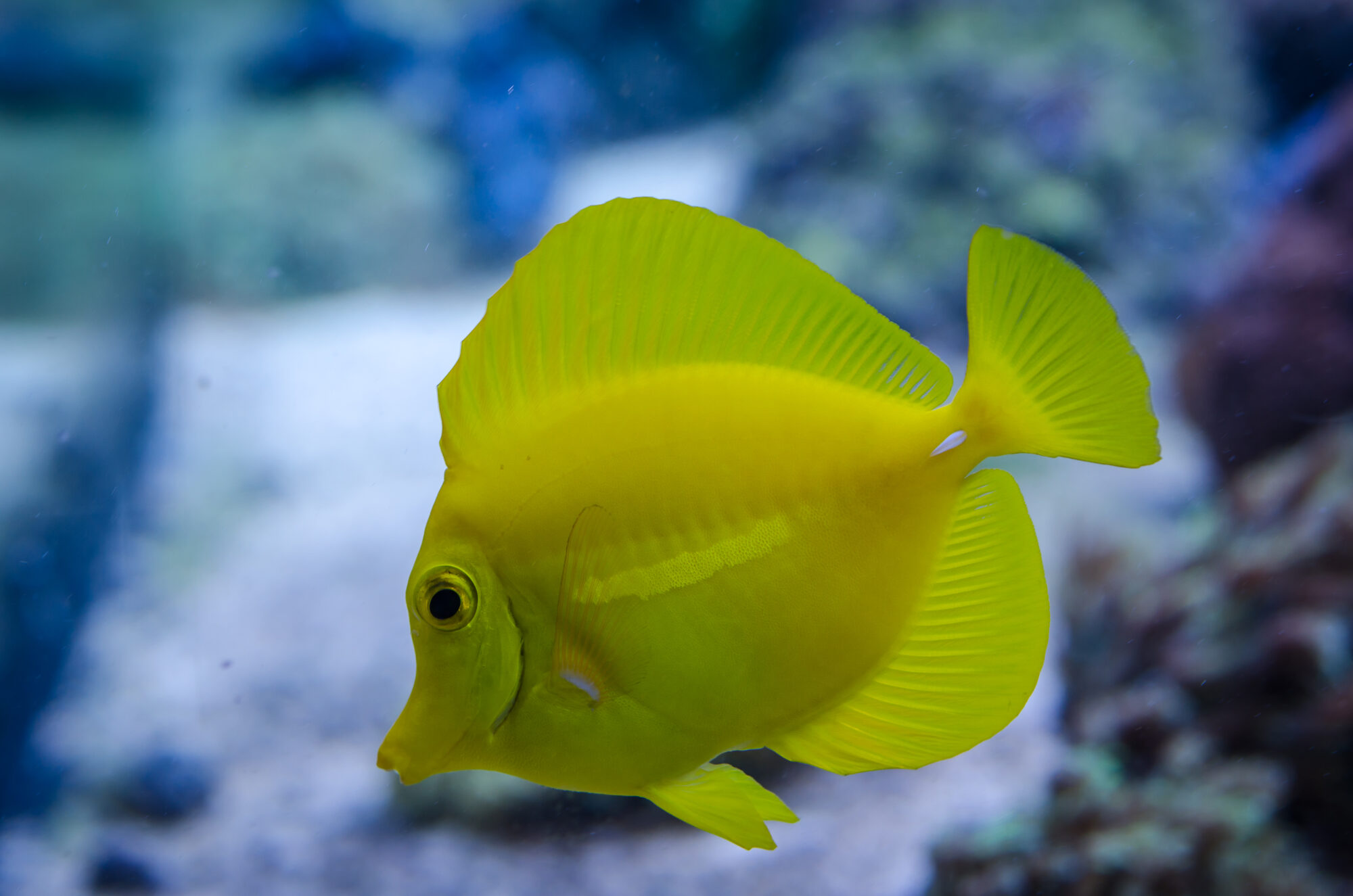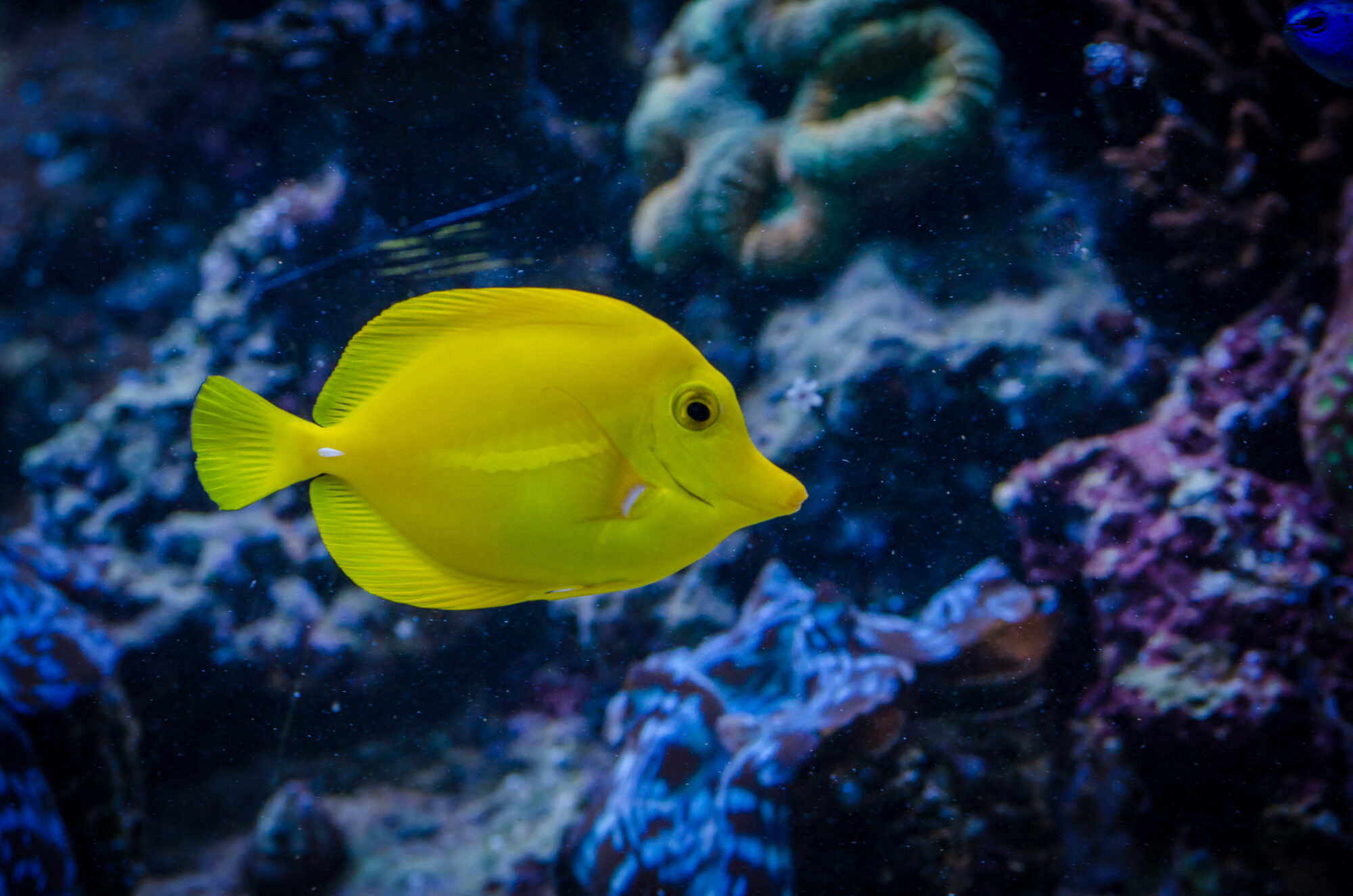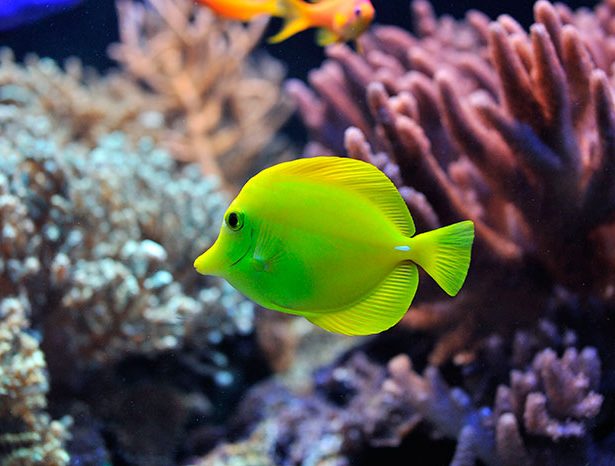Zebrasoma flavescens
Order: Perciformes | Family: Acanthuriade


This species can be found in the waters of the Eastern and Southern Pacific Ocean, around the Philippines, Vietnam, Papua New Guinea, Guam, Southern Japan, Micronesia, Hawaii, and the Marshall Islands. It is most prominently found in Hawaii, where it’s used as an aquarium fish. It inhabits regions with a lot of coral and lagoons on the edges of reefs. It is possible to find this fish anywhere from 20 to 40 meters below the surface, but it’s more common to appear around the 20-meter mark. Its sustenance is comprised mainly of algae that grows on corals and the seabed. It has the habit of cleaning the algae that grows on the shells of turtles. It can live longer than 40 years, and it can grow to 20 cm in length. It grows very quickly in the first years of its life; a two-year-old fish can already be 10 cm long. After reaching maturity at around 5 years, the growth slows down heavily. Females reach maturity earlier, at around 3-4 years of age, while males take 4-5 years. As a result, females tend to be smaller. It can be found alone, in pairs, or in small groups in the wild, but it doesn’t stay in those groups for life. It is aggressive towards other representatives of the Acanthuridae family. It’s a very active and curious fish during the day, and at night, it looks for shelter.
The body of the yellow tang has a characteristic vibrant yellow color, which pales during the night, and its sides develop a darker coloring.
Like other Acanthuridae, it has two sharp spikes at the base of its tail to protect itself or to help during battles for territory. It most probably does not have a poisonous gland next to those spikes. It is dioecious and egg-laying. Spawning occurs in pairs or small groups, and it’s tightly connected to the phases of the Moon. Males demonstrate interesting mating dances during spawning.
Daily travels of the yellow tang
There is a distinct division in terms of habitat between juvenile and adult fish. The juveniles inhabit the deeper regions of coral reefs, where they find shelter. After reaching maturity, they change their habitat to shallower regions, which have abundant algae growth and greater biodiversity. The daily migration of juveniles isn’t as extensive as the migration of adults, which can cover even 800 meters between their day and night shelters. They spend their day seeking food in the shallow (<10m) regions rich in algae, and at night, they look for shelter in the deeper parts of the reefs.


